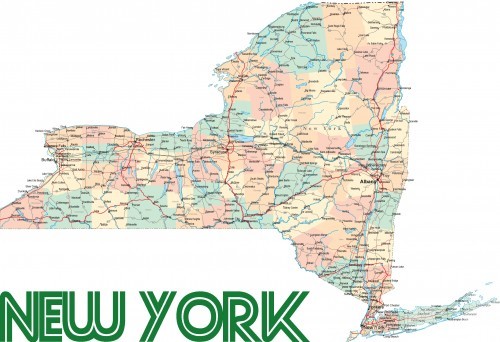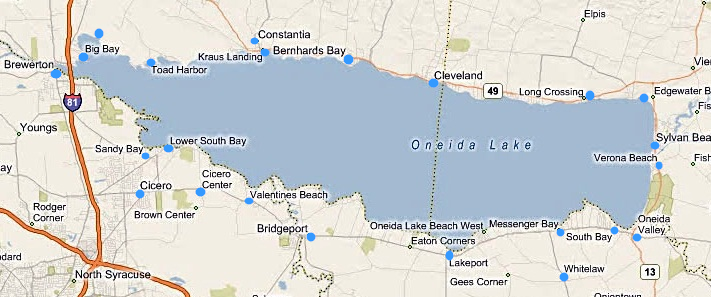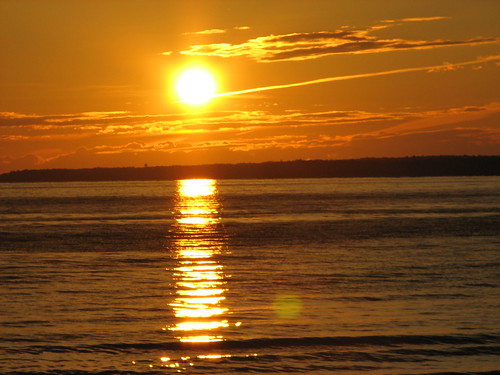Blue Highways: Forest House Lodge, New York
Unfolding the Map
 A venture into the forest can be a transforming experience, regardless of the moods of the forest on any particular day. William Least Heat-Moon (LHM) wanders into a forest and eventually seeks out the warmth of the Forest House Lodge roadhouse. While we sit with him for a few moments at the bar with a Genessee Cream Ale, I'll reflect a little on my love for the forest. If you want to get lost in an Adirondack Forest, enter underneath the boughs and push past the brambles to the map. Watch for poison ivy!
A venture into the forest can be a transforming experience, regardless of the moods of the forest on any particular day. William Least Heat-Moon (LHM) wanders into a forest and eventually seeks out the warmth of the Forest House Lodge roadhouse. While we sit with him for a few moments at the bar with a Genessee Cream Ale, I'll reflect a little on my love for the forest. If you want to get lost in an Adirondack Forest, enter underneath the boughs and push past the brambles to the map. Watch for poison ivy!
Book Quote
"The forest became heavier, sky darker, mountains higher, settlements further apart....I was at the heart of a great wilderness second only to the Northwoods of Maine in the eastern United States. An occasional woodsy gift shop or burger stand built like a chalet did not prevent the forest from being pervasive, ominous, and forbidding; nor did they quiet the strange cries of birds from the dark hemlock. Then a cold rain blew down, turned to hail, then eased to a drizzly fog. It was early afternoon, yet headlights vanished after twenty yards as if the damp extinguished the beams. Birch, alder, conifers - nothing but trees and water and fog for miles.
"East of the village of Blue Mountain Lake, dominated by a bluish hump of the Adirondacks, the road descended to a small building - part house, part tavern - snugged against a wooded hill and surrounded by vaporous mountains. The mist glowed orange from a neon beer sign. The building, white clapboard trimmed in red with a silvery corrugated tin roof, was the Forest House Lodge. In fact, it wasn't a lodge, but something even better: an antique roadhouse. The roadhouse - institution and word - has nearly disappeared from America."
Blue Highways: Part 8, Chapter 6
 I'd love to have found an image of the Forest House Lodge, but alas, I couldn't. Here's a picture of the Adirondack Museum, nearby in Blue Mountain Lake. Photo at < a href="http://www.art.com">Art.com Click on photo to go to host page.
I'd love to have found an image of the Forest House Lodge, but alas, I couldn't. Here's a picture of the Adirondack Museum, nearby in Blue Mountain Lake. Photo at < a href="http://www.art.com">Art.com Click on photo to go to host page.
Forest House Lodge, New York
LHM sets up his stop at the Forest House Lodge by contrasting the gloom of the forest with the coziness of the roadhouse. I will come back to this theme a little later. In the interim, I'd like to share with you why I love forests, even if they are dark, gloomy and scary.
I grew up in an area that was heavily forested. I say "was" because over the years, as the lumber company in my hometown went from being a locally-owned corporation to a subsidiary of major corporations such as Boise Cascade and Georgia Pacific, and as shareholders began to demand more, a cycle of greater cutting occurred. The logs that exited forest logging roads on trucks got smaller and smaller. It will take many generations for the redwood forests that I grew up in to regenerate themselves.
However, when I was young the forest was a big place, and even if as an adult I can see how much we've lost, it is still a big place, especially when I stand on the side of the road at the summit of Seven Mile Hill and look out over the tree-covered mountains toward the coast.
It was in these forests that I learned the beauty of nature. If you've never experienced late afternoon in a Northern California forest on a sunny spring or summer day, you haven't experienced one of life's pleasures. On the ground level, the light streams through the breaks in the leaves and leaves a diagonal dappled pattern on the forest floor. Insects buzz, serving as a break in the silence save for the rush of a breeze in the leaves. Above, the light shining through leaves that are just opaque enough to allow a little light through turns those leaves a brilliant green. The radiant blue of the sky above contrasts just right with the greens of the forest. The dried leaves on the forest floor have their own, woody and loamy scent.
I even loved the forest in winter. A redwood forest in winter, some would say, is a pretty miserable place. Cold and misty, you get chilled to the bone while water droplets from the trees fall onto your neck and travel down inside your shirt, along your spine, and deposit themselves in your underwear. The deciduous trees have lost all their leaves, so everything seems barren despite the leaves still present on the conifers. There is perpetual fog, partly because the trees themselves create their own ecosystems and therefore create the fog that lingers around their treetops and the rain that nourishes their roots. The forest carpet of dead leaves is wet, like a sponge, and hideous looking huge mushrooms, most likely poisonous, spring up everywhere. Yet, even in this environment, I was happy. The rivers ran full, often with salmon swimming to their spawning grounds. The air smelled fresh and clean. When we had a cabin, the wet outdoors meant lazy days indoors by a fire.
Regardless of the time of year or the circumstances, when I'm in the middle of a forest it seems like a living being. I don't just mean that there are lots of trees, plants and animals that are all living and dying in their individualities. I mean that taken all together, it is as if I am standing in the midst of a large, living, breathing being. It is hard to describe, and if you're concentrating on some task, you're bound to miss it. But if you stand and listen, and open your mind, you can feel the spirit of the forest. My father, who for all his faults could have moments of extreme transcendence, used to tell me to "listen to the trees," and we'd sit in silence. I think that in those moments that he was tapped into something larger than himself, me, and all of us that have confined ourselves to a narrow range of our senses.
And this sounds a lot like what LHM describes in his quote - this sense of the forest as something larger. For LHM, however, he feels a need to escape it. Let's do a little thought experiment. Let's imagine that LHM is traveling not in 1980 but in 1780. Ghost Dancing is not a van but a carriage of some kind, perhaps a stage, drawn by horses and a driver. While LHM dozes and muses in the carriage, the forest outside broods and darkens, an energy that can't be understood but can be felt. It's cold. After a long time of travel, the carriage descends into a valley and at the bottom is light, warmth, food and drink and a little mystery and intrigue. The roadhouse.
LHM writes the roadhouse is disappearing from American life. I would argue that it has just reacted to the more mobile American way of life. A roadhouse originally offered both food and lodging, along with entertainment and gambling, but now you rarely find a place that is not a hotel that can offer such amenities. It makes sense that when society relies on horse or foot-powered transport that all of the amenities needed by travelers is concentrated in one place. That is probably why they were considered to be a little disreputable, as Wikipedia puts it. It seems to me that the function of the roadhouse, in the modern age, has split among multiple types of establishments. Hotels, restaurants, casinos, and nightclubs all offer individualized parts of the roadhouse. Interestingly enough, those establishments that offer all of those things are now considered upscale, and called resorts.
In Europe, one can still find remnants of what we would consider the roadhouse, though more reputable. I've read that in parts of Europe, such as Germany and Austria, one can go for a hike in the mountains and forests, and find establishments serving food, drink and even lodging at various points along the way. I wish we had more of this concept in the U.S., along with the right to traverse private property as is common in places like Sweden. Such privileges would make even more forests available to the common person, might encourage more healthy outdoor activities, and would certainly get me out in the mountains and forests more often. Thankfully, I still have my own little corner of a forest in the form of thirteen acres in Northern California. Even though I hardly get there anymore, it is nice to know that this small slice of forest, a part of a disappearing forest that once covered much of the western United States, is still there for me. I can still tap into that energy that connects us with something larger than ourselves.
Musical Interlude
In this post, I'll include two songs. The first is Redwood Tree by Van Morrison and I thought the song captured some of the feeling I had about my own redwood forest and my love of forests in particular.
The second song, Roadhouse Blues by The Doors, is a modern reference to the checkered past of that particular American institution.
If you want to know more about Forest House Lodge
I couldn't find much on the Forest House Lodge Bed and Breakfast, which the former roadhouse has become. Here's some information on Blue Mountain Lake, the community in which it is situated.
Adirondack.net: Blue Mountain Lake
Adirondack Museum
Indian Lake Chamber of Commerce
Wikipedia: Blue Mountain Lake
Next up: Somewhere on the Hudson River




 Saturday, June 9, 2012 at 12:31PM
Saturday, June 9, 2012 at 12:31PM






